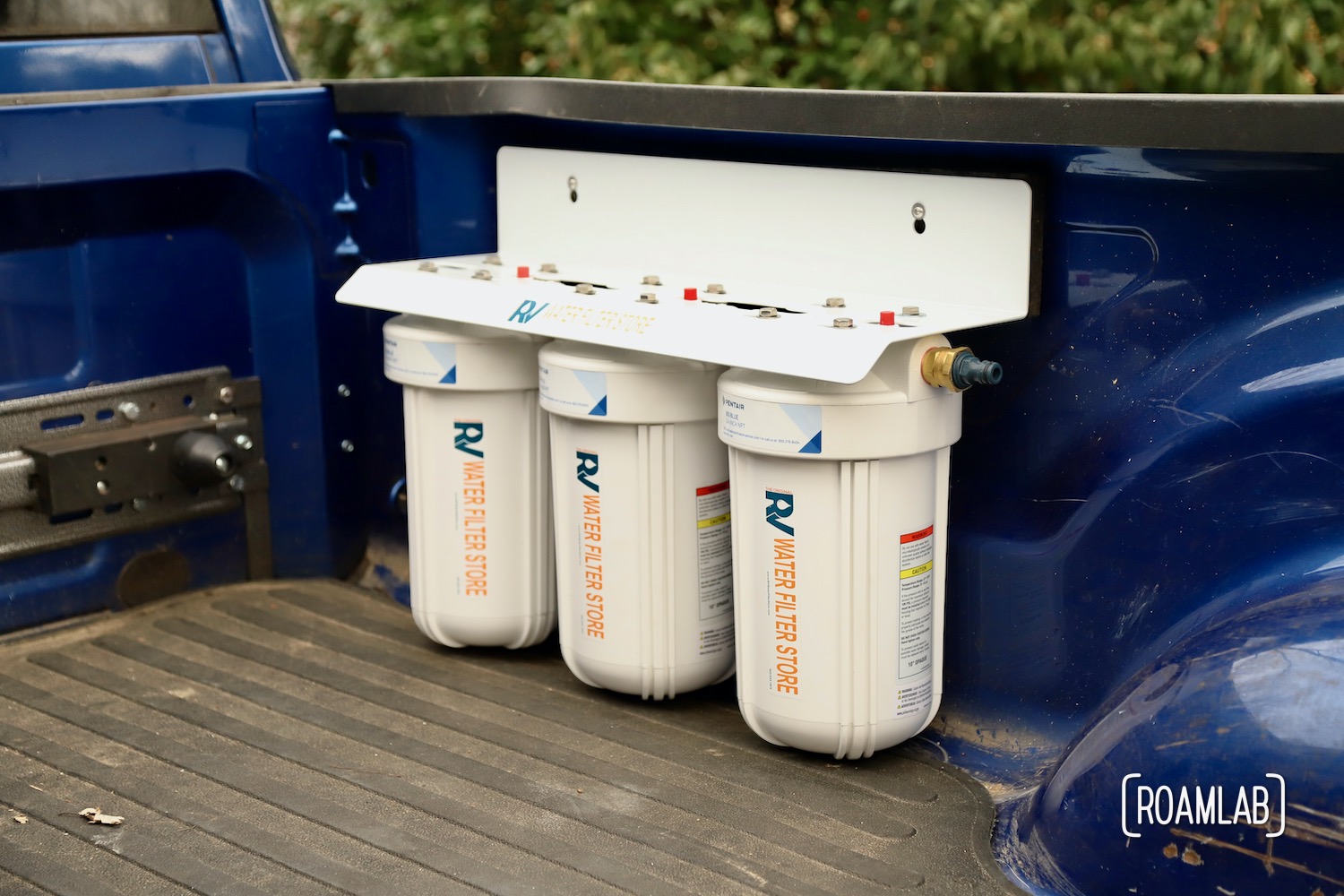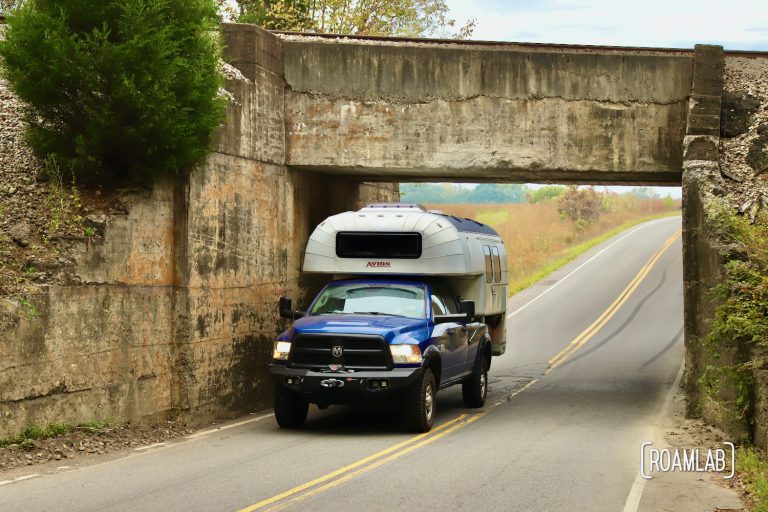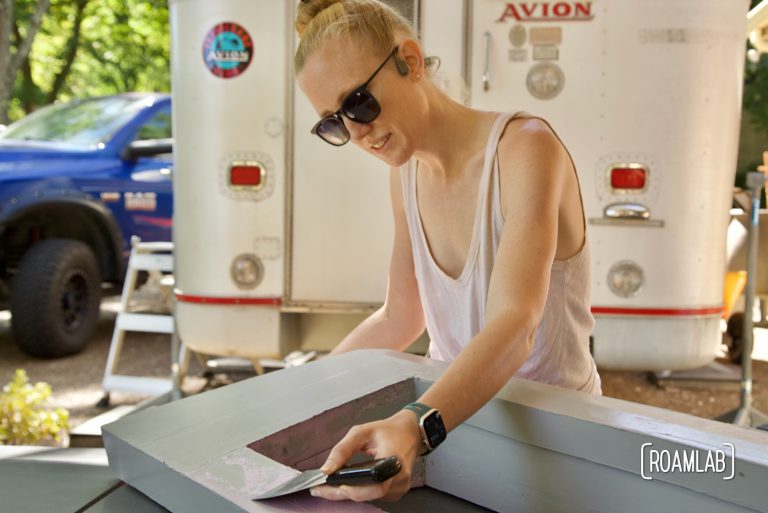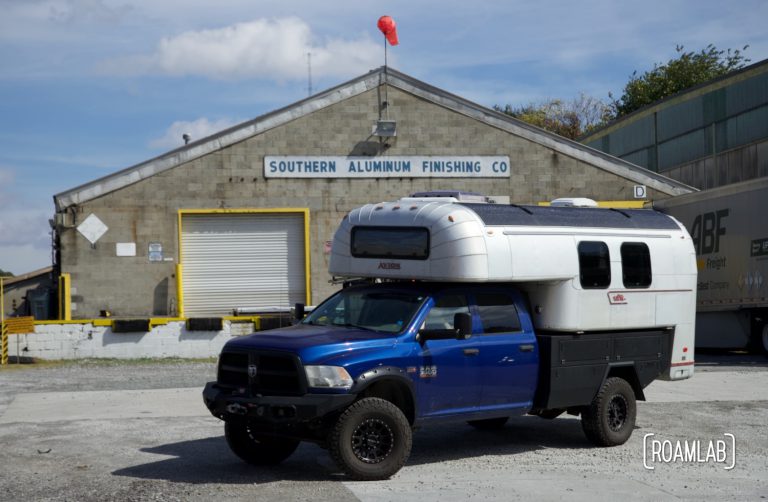2020 has been an electric year for us. We built our own LiFePO4 batteries, mounted custom solar panels, and hooked up the system to charge from shore power and the truck alternator. 2021 will be the year of water. Along with a new water tank and plumbing for our camper, we will also be installing an auxiliary water tank in the truck bed—reclaiming an unused section of the truck bed. We will use both tanks to store water for drinking, cooking, and cleaning. We are installing the RV Water Filter Store’s South of the Border Drinking Water Filtration System to process any water before it enters either water tank.
The South of the Border Water Filtration System
The South of the Border Drinking Water Filtration System is designed to deliver safe and tasty drinking water with a three-part filtration system. The system handles pathogenic bacteria, a threat when sourcing the water from natural resources or traveling through Mexico and South America. To do this, the system combines three large water filters. First, the water passes through the PR1-Jumbo, a 1-micron pleated polyester filter to capture sediment in the water. Next, the Dulton RIO 2000 ceramic filter captures bacteria and microbial cysts. Finally, the KDF-GAC BB Cartridge is a bacteriostatic filter that removes chlorine, chemicals and pesticides, lead, heavy metals, and other materials that may cause a taste or odor in the water. Altogether, these filters should ensure safe water for our remote travels.
Source water enters → sediment filter (PR1-Jumbo) → Carbon filter (Doulton Rio 2000) → Specialty filter (KDF-GAC BB) → Drinking water exits
But such a comprehensive system is a little too big for our truck camper interior. Fortunately, this is a great opportunity for us to use the storage space in our truck bed between the truck cab and wheel wells. The filters fit perfectly within the space, but it should be noted that ice crystals from freezing temperatures will damage the filters. In a follow-up project, we will be building an insulated and temperature-controlled enclosure for the filters. At the moment, though, we will make the filters easy to install and remove to store the filters somewhere warm when at risk of freezing temperatures.
Installing A Water Filtration System
Our South of the Border Drinking Water Filtration System comes with all the hardware needed to assemble and install. That said, our installations frequently are more complicated than simply what comes with the directions. Given that we are mounting the filtration system to the truck wall, we want easy mount points and a spacer to properly align the filters with the truck bed wall. We also need the hardware to connect the system to a water source and the holding tanks. For a standard installation, this would mean plumbing work. For us, this looks more like a shopping list for a gardener:
Materials
Tools
- Rivet nut gun
- Drill driver
- Tape measure
- Box cutter
- Cutting surface such as a wood board
Mount Points
The water filter system has two mount points for screwing the mounting plate to a wall. We will be using these holes to secure the filter system to our truck bed’s inner wall. Yet, we want flexible mount points to installed and remove the filter system easily. So, rather than screwing directly into the truck bed’s sheet metal, we use rivet nuts installed at the mount points in the truck wall. These will accept a bolt running through the mounting bracket and into the rivet nuts which also provides a stronger hold than sheet metal screws. To do this, we drill a couple of pilot holes and then use a rivet nut gun to secure the rivet nuts to the truck bed wall.
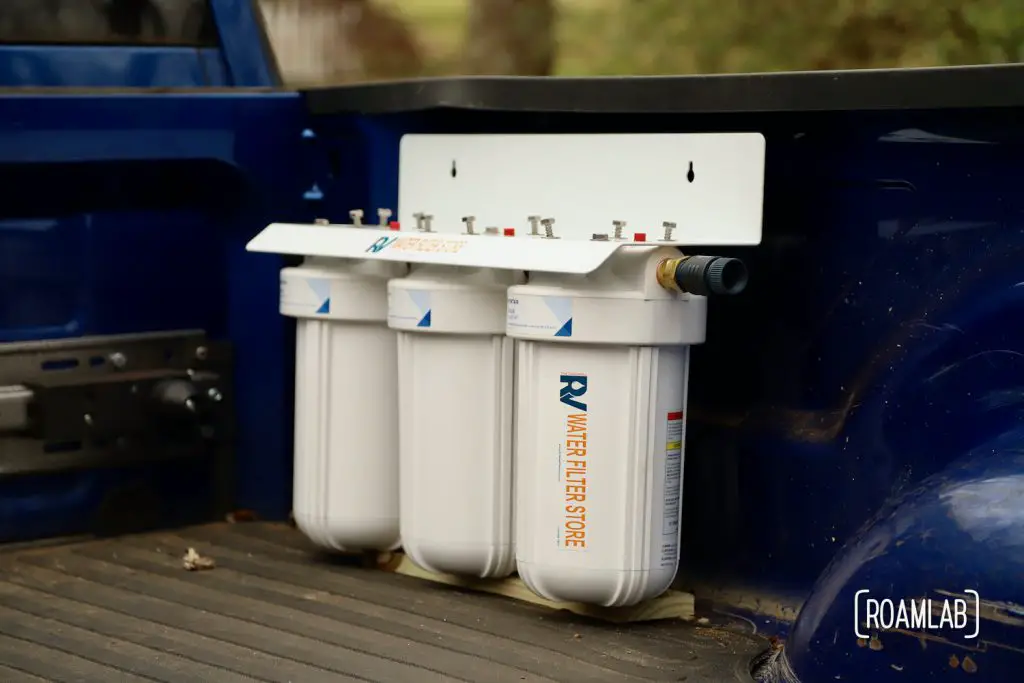
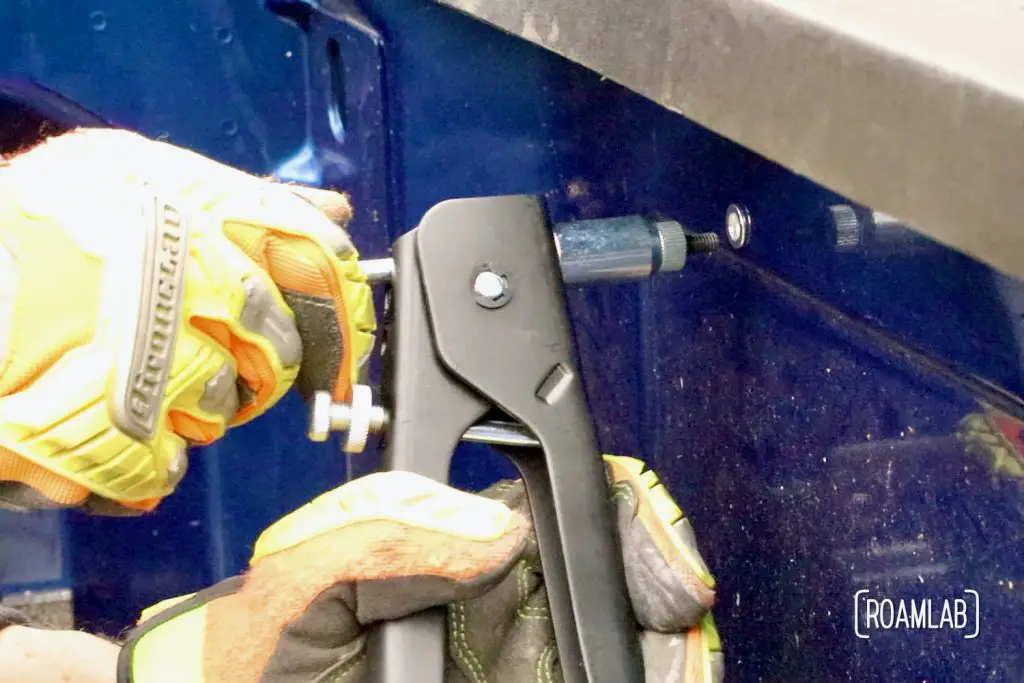
Rubber Spacer
We also have to contend with the walls of the truck bed. Unlike a standard vertical wall that we might find inside an RV, the truck bed walls bend inward from the floor, so we need to add a spacer between the truck bed wall and the filter system to allow the filters to sit vertically. For this, we use a box cutter to cut a piece of 3/4-inch scrap horse mat to match the back of the system’s mounting bracket. We find that the box cutter is the simplest way of cutting through thick rubber.
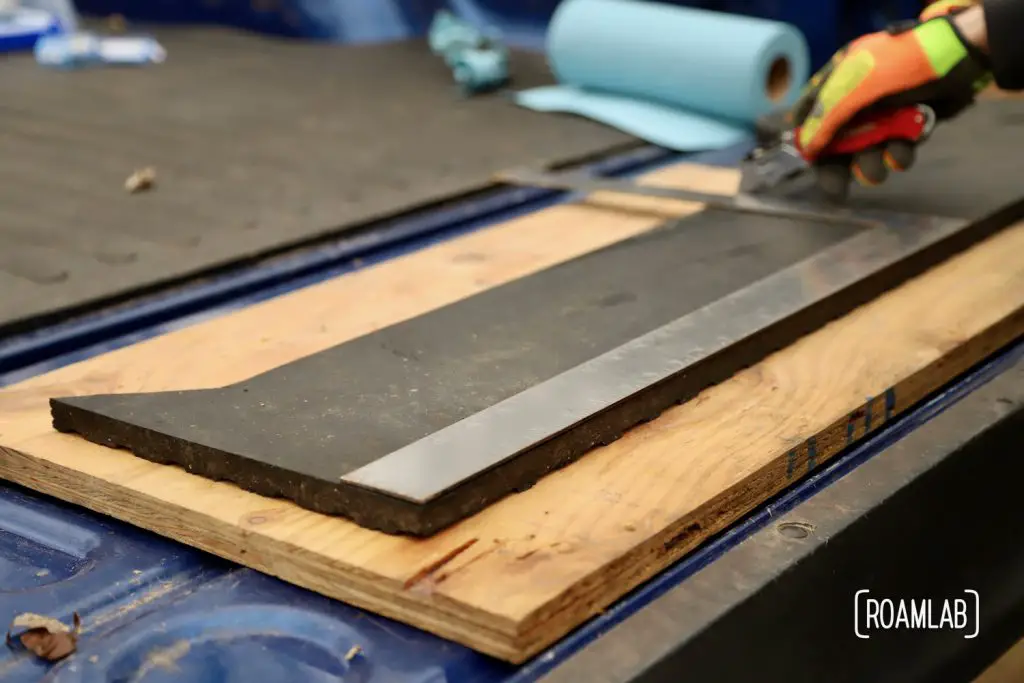
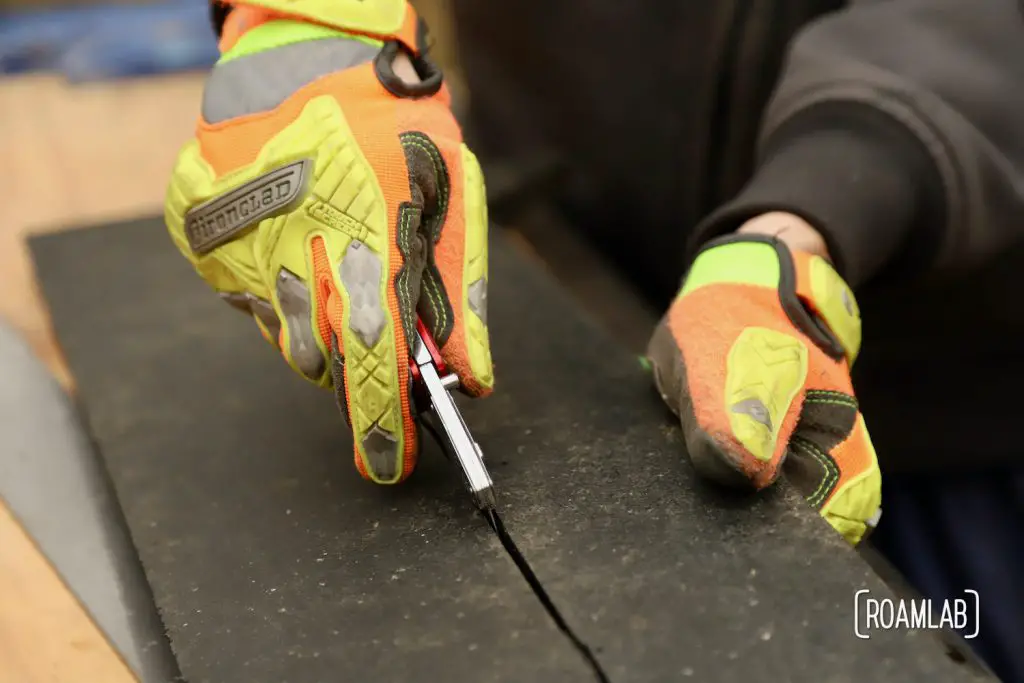
Assembling the Filter System
Next, we need to assemble the filter system. Our system came in two boxes, with the canisters, head assembly, bracket, and mounting equipment in one box and the filters in another. We seat each filter in its own canister and connect each through a head assembly. Then we secure the head assembly to a mounting bracket and connect the system to the RV wall.
Arrange the Head Assembly
We already installed the bracket’s mount points, so next, we attach the head assembly to the mounting bracket. This involves driving twelve screws through holes in the bracket into the head assembly. Since the head assembly’s screw points are plastic, it’s important not to overtighten so we hand tighten until the screws are snug. The direction we attach to the mounting bracket determines which side of the filter system the water enters and which side it exits. Fortunately, there are arrows on the assembly to indicate which direction the water should flow.
Prepare and Order the Filters
Next, we install the filters in the canisters. We need to assemble the Doulton RIO 2000 before installing it, and all the filters need to be rinsed off. As noted earlier, the order of the filters is important so they need to be arranged in the direction of the water flow. The water should first travel through a sediment filter (the PR1-Jumbo) to protect the finer filters downstream. Then the water should travel through the carbon filter (the Doulton Rio 2000). And finally, the water should travel through the specialty filter (KDF-GAC BB).
- Sediment filter (PR1-Jumbo)
- Carbon Filter (Doulton Rio 2000)
- Specialty Filter (KDF-GAC BB)
Position the O-rings
Before we secure the canisters to the head assembly, we want to install the o-rings. These sit on the canister’s top inner lip but are easy to knock off if the canister isn’t upright. So we place these just before we are ready to screw the canisters on.
Secure the Canister
Double-check that the correct filter is in each canister and then screw the canister onto the head assembly. The system comes with a canister wrench, which looks like a large magnifying glass without the glass. We can use this to ensure a tight fit while being sure not to overtighten.
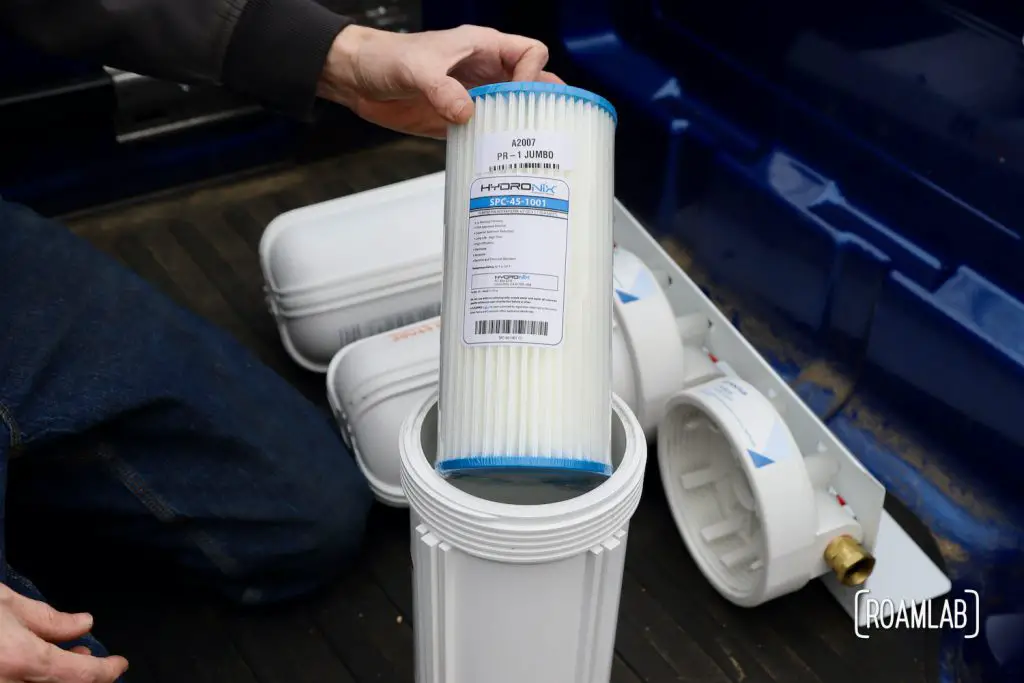
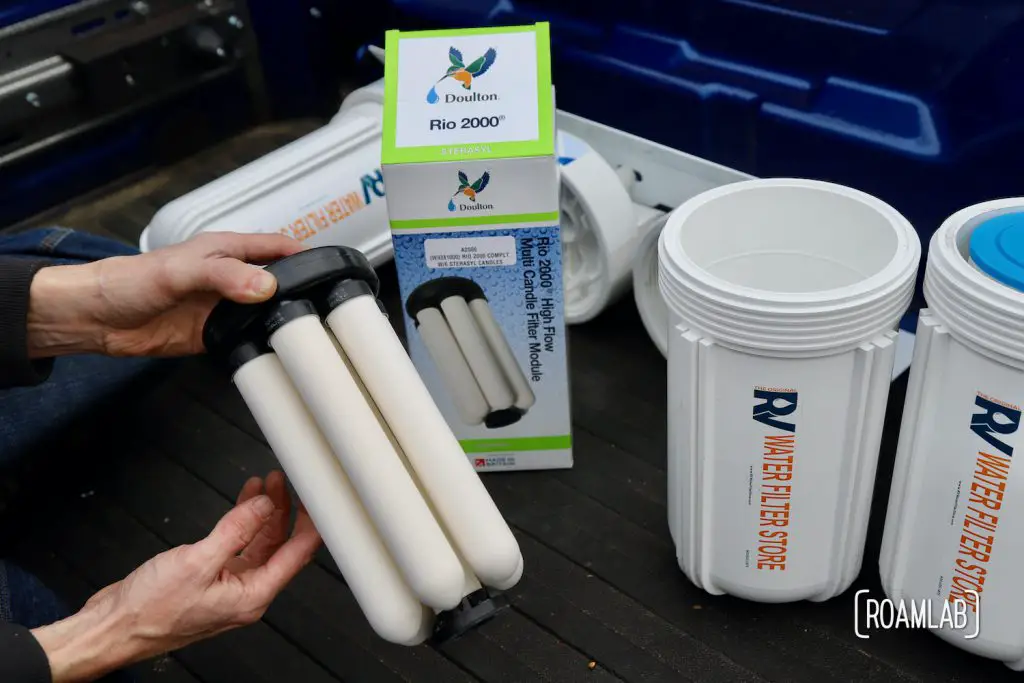
Bring in it All Together
With the water filtration system assembled, we can bolt the system onto the truck wall and slide in the truck camper. It’s a bit of a tight fit with a little over an inch between the filtration system’s mounting bracket and the truck camper’s wall.
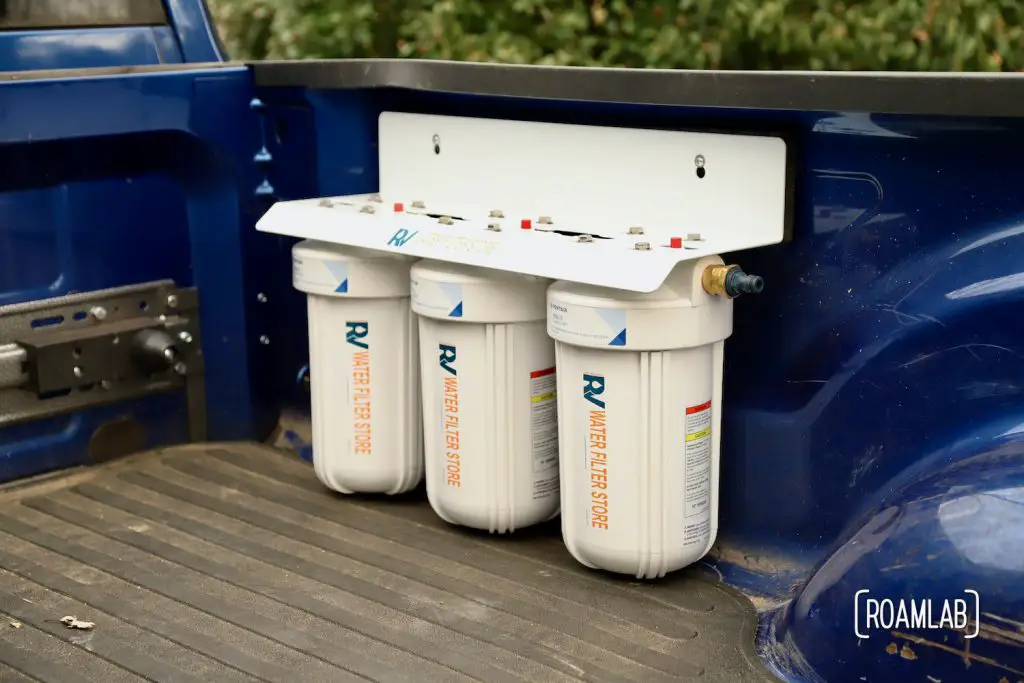
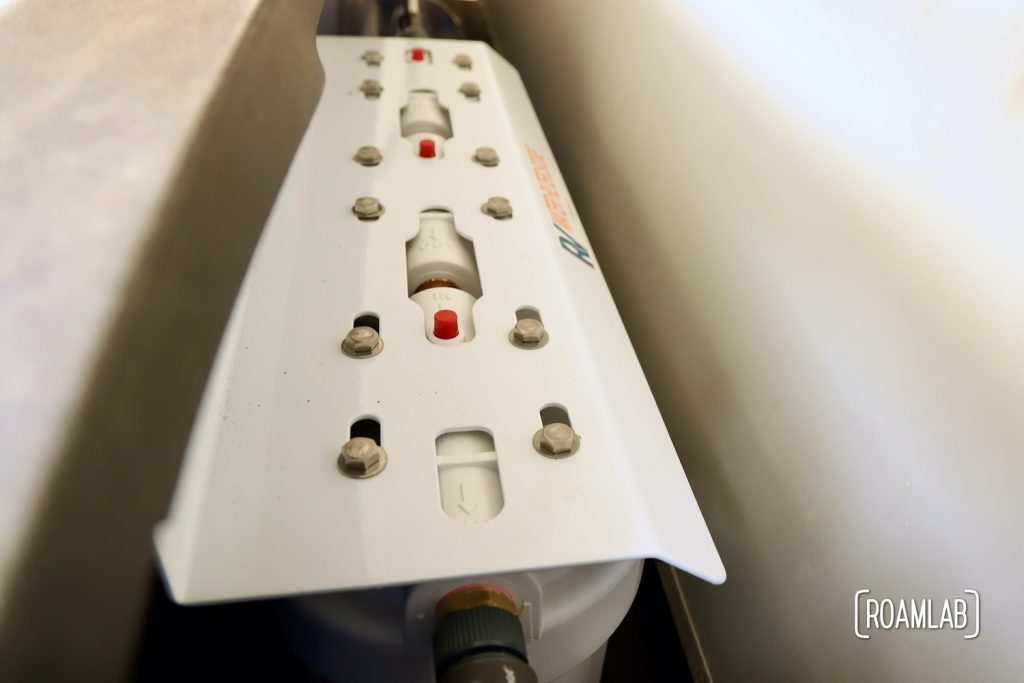
Hooking up the Filtration System
When the truck camper is in place, there is very little room to access the filtration system. We arranged our system to accept hose water starting with the first canister (closest to the rear wheel) and drinkable water exiting (closest to the truck cab). We can reach the left opening to attach a hose to fill either the interior or auxiliary tanks. But I can’t reach the right opening while the truck camper is in place. Instead, we have a hose that we can connect to whatever water supply we are using. This way, we can easily filter water before it enters the water tanks.
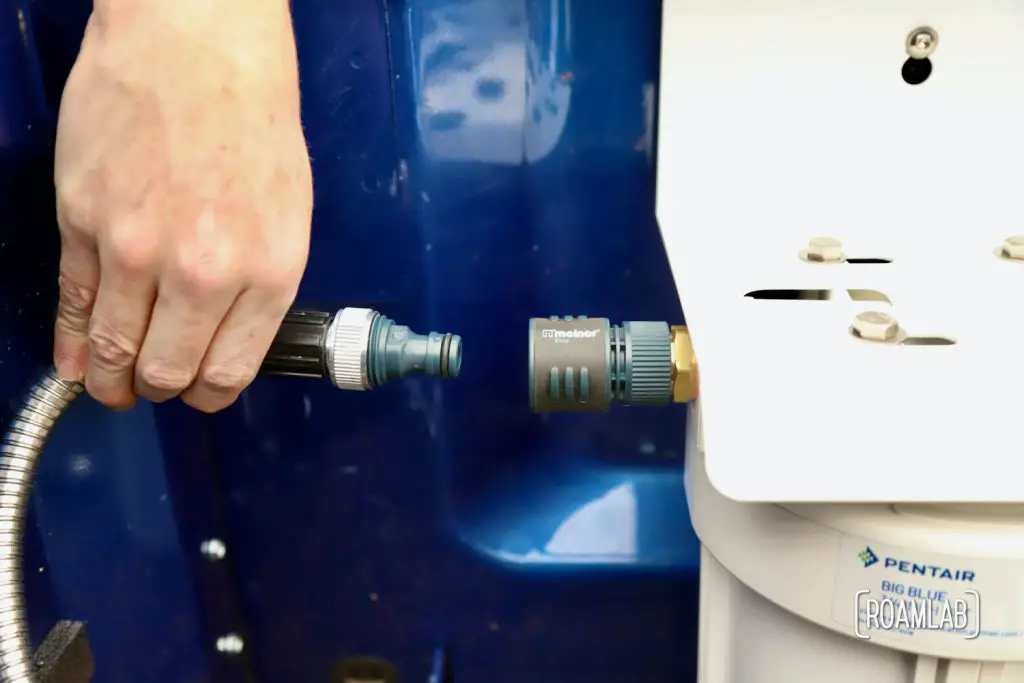
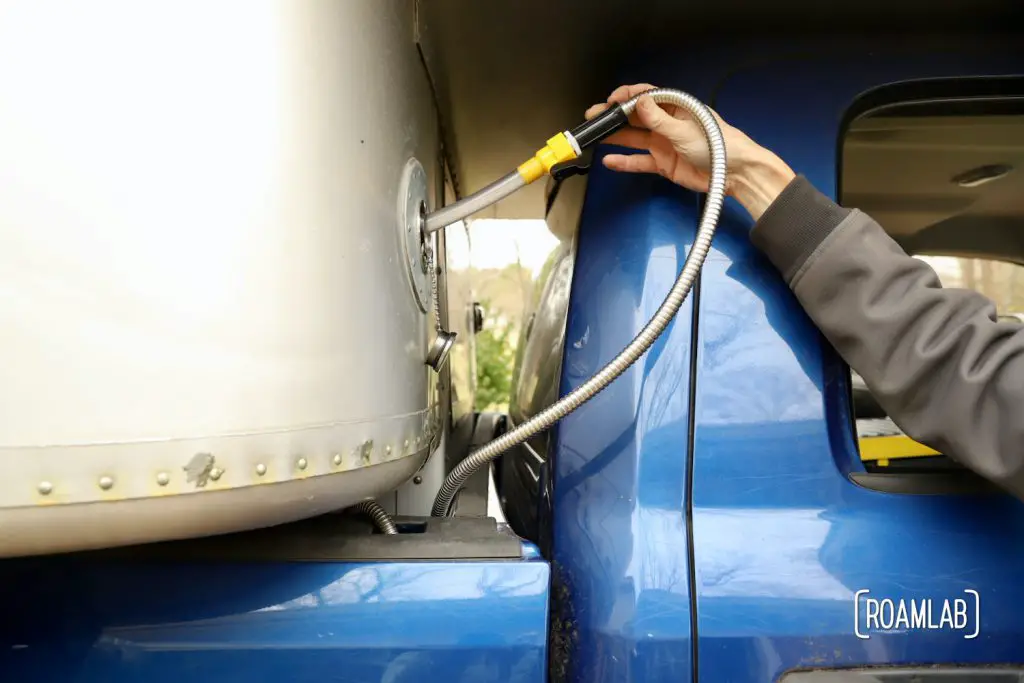
Final Thoughts
Overall, we are delighted to be able to reclaim wasted space in the truck bed. We’ve looked into custom truck beds that would give us access to the relatively large space between the cab and rear wheel on each side of the truck bed. But those kinds of undertakings get expensive fast, and we have more pressing projects to complete. This way, we’ll have quality drinking water without sacrificing a large section of the interior in our truck camper.


